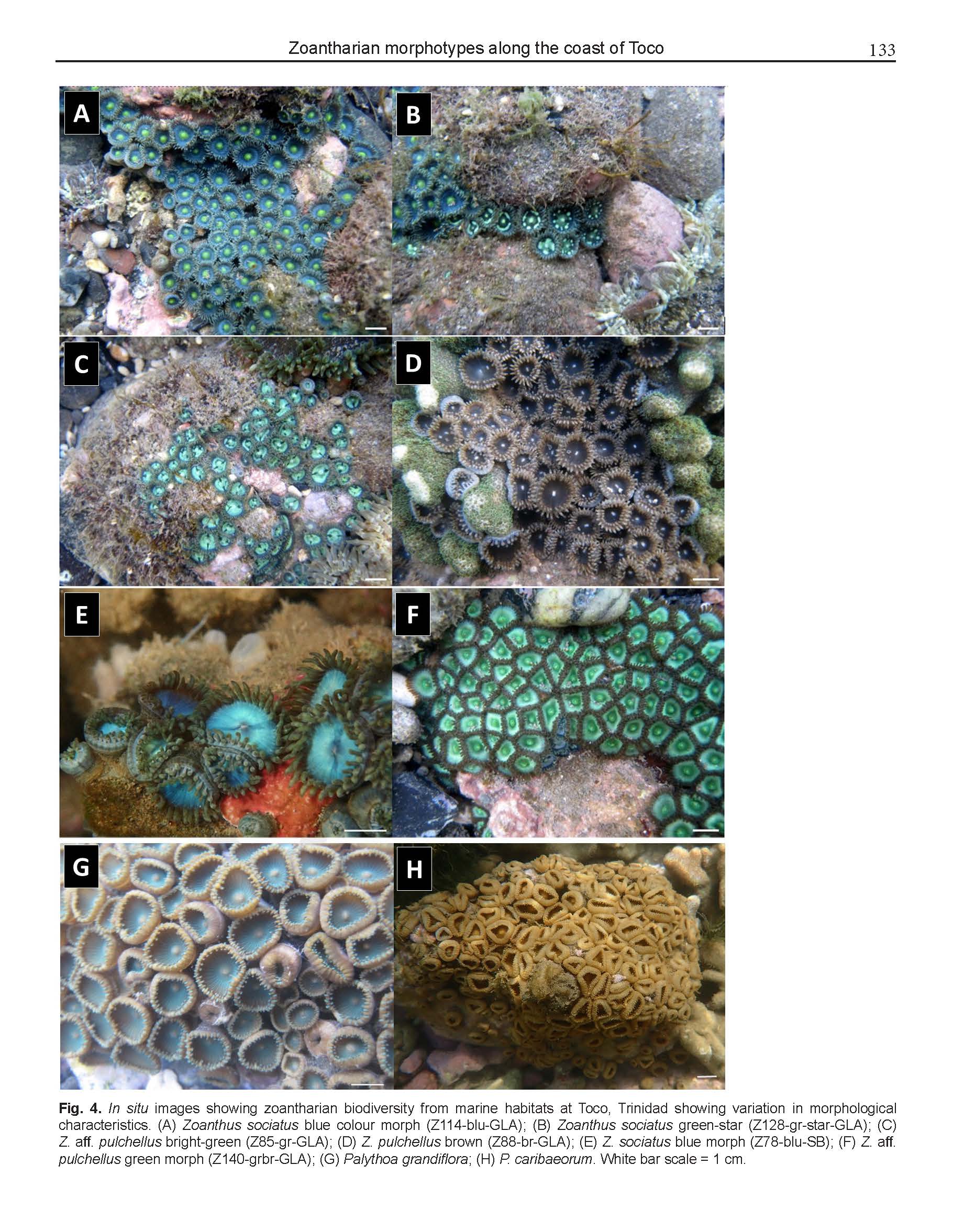Utilization of two DNA barcoding techniques, alongside morphological characters, confirms the presence of zoantharian morphotypes (Cnidaria: Hexacorallia: Zoantharia) along the coast of Toco, Trinidad
Keywords:
barcoding, coral reefs, Palythoa, Zoantharia, Zoantharian, ZoanthusAbstract
Many marine invertebrates on coral reefs have cryptic morphological features making them challenging to accurately identify. One such group are the zoantharians, benthic anemone-like organisms found globally and throughout coral reefs in the Caribbean Sea. In past studies, zoantharians surveyed on reefs at Toco, Trinidad, have been visually identified as belonging to genus Palythoa and Zoanthus spp. This study explored the use of morphology and two DNA barcoding approaches to further classify Toco’s zoantharians. Morphological polyp characteristics, including oral disk diameter, tentacle counts, colours, and coenenchyma development were recorded in situ. Additionally, mitochondrial 16S ribosomal DNA (mt 16S rDNA) and the mitochondrial cytochrome oxidase subunit I (mt COI) genes of these same zoantharians were amplified using polymerase chain reaction (PCR), then sequenced. Results from mt 16S rDNA and mt COI gene sequences identified four zoantharians: Z. pulchellus, Z. sociatus, P. grandiflora, and for the first time Z. aff. pulchellus. All new sequences were deposited online at the National Center for Biotechnology Information (NCBI), and GenBank accession numbers were assigned to specimens. Oral disk diameters were smaller (4-10 mm) for Z. sociatus than Z. pulchellus (4-12 mm), with tentacle counts also following a similar pattern. Oral disk and tentacle colours were variable from blue, green, brown, pink, and orange. Oral disk diameter and tentacle count for P. grandiflora were larger and numerous than observed in P. caribaeorum. Additionally, coenenchyme growth form easily distinguished these two species. The comparison between morphological features, including oral disk diameter, tentacle count, and coenenchyme development, together with molecular identification using the barcoding technique, characterised zoantharian diversity more accurately than past studies at these sites, and underlines the urgent need for continued work on marine invertebrate species identification in this region.

